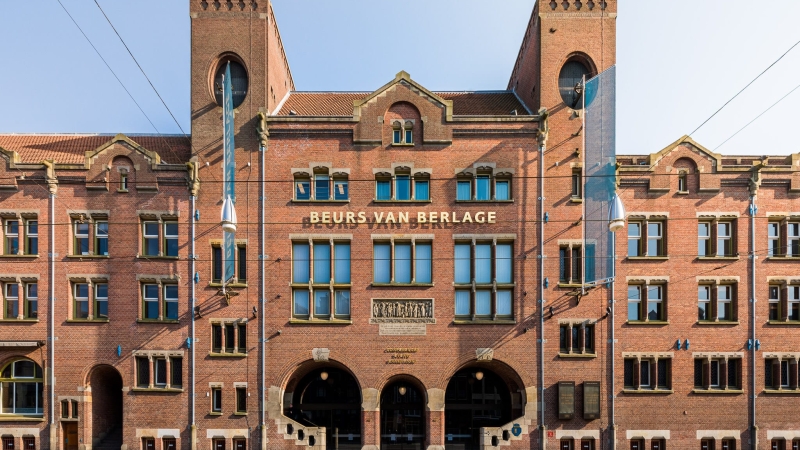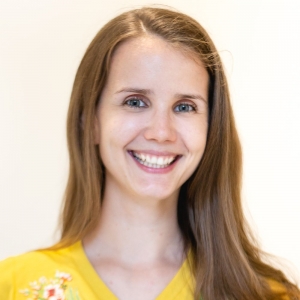With countries across Europe relaxing restrictions, demand for travel and events is growing. As such, things are finally looking up for the MICE industry.
We spoke with industry professionals to understand their experience of this hope-filled yet challenging recovery phase.
Our first chat was with Danielle Coelen-Meijer, Senior Sales Manager at Beurs van Berlage in Amsterdam. Read on to discover how she and her team faced the past two years and how they’re moving forward.
Adopting a remote work model
Danielle told us how the past two years affected her personally and professionally. “On a professional level, the first change was the shift from working in the office and the venue to working from home. On a weekend in mid-March 2020, the government announced the pandemic. On the same day, we were told not to come back to the office on Monday.
Luckily, I have an office at home where I can work comfortably. But not having the whole team around me was still a big change. We were still working as a team, but everyone was home, and we only connected via email and video calls.
Of course everyone else in my family had to stay home, too. Like many others, I had to get used to structuring my days differently and coping with interruptions. Not knowing how all this would develop and how long it would last was most stressful for me,” Danielle says.
| Start sourcing for free today |
The pandemic’s impact on the day-to-day at Beurs van Berlage
Stay-at-home orders and the inability to plan had a drastic effect on business at Beurs van Berlage.
“All the cancellations that came in early 2020 were a big challenge. Since we were hopeful for the summer, we postponed as many events as possible. But as the situation unfolded, we had to have difficult conversations with clients about continuing to move or cancel events.
This also forced us to think about how to go about the day-to-day. Do we continue with our usual tasks? Should we target new or different clients? In the end, we produced multiple strategies for various scenarios and adapted them as the situation evolved,” Danielle explains.
Unsurprisingly, the work on-site changed a lot as well: “While the venue was closed, only our General Manager went in to check that everything was in order. The Beurs van Berlage is a historical building, so it’s important to stay on top of maintenance. When we were allowed back to the venue, the whole team worked together on deep cleaning and maintenance work. That kept us busy and distracted for some time.”
As it became clear that the pandemic would last at least through the autumn and winter of 2020, tough decisions became necessary: “For a large part of 2020 we barely had any revenue but there were still a lot of costs. As a result, we had to reorganise our teams and unfortunately say goodbye to several colleagues. That had an enormous impact on all of us. Some team members have returned in the meantime, but others have taken on new challenges. Like many other event venues, that leaves us scrambling for talent now.”
Organising events in a post-lockdown environment
Once the lockdown ended, requests for events began coming in again at Beurs van Berlage. However, given the situation, a new approach was needed: “Overall, our partners are still looking for the same thing as before the pandemic: events where people get together. But apart from the usual organisational aspects, we needed to work with new hygiene and safety standards. This involved a lot of practical trials at first. We went to the conference rooms and tested different setups to find one that worked for our client and guaranteed a safe event. The whole team was involved, and we all worked together to find the best solution for each function room.”
Attendee limits and people’s reluctance to join events in person also led to the emergence of hybrid events: “We decided to invest in a full suite of hybrid event technology pretty early on. This made us an attractive partner for clients who wanted an on-site experience all while reaching a large audience digitally. Demand for event recordings has soared as well, so we added this service, too. Again, we did a lot of testing before reopening so we could guarantee system security and ensure smooth operations.”
Adapting strategies and operations to a new reality
With the reopening and loosening of restrictions came the need to adapt to the changed circumstances. Like at many other properties, this had to go beyond offering new event concepts at Beurs van Berlage: “One of the most challenging things was to change our entire commercial plan. First, we had to adapt to overall lower demand. Then we had to consider that some of our key international markets were still reluctant or unable to travel. We looked for new partners, especially in local markets, and had to devise new strategies to reach our five- and ten-year goals.”
Of course, operationally there have also been challenges since the reopening: “There’s still a lot of uncertainty in our industry and people only organise MICE in the short term. So where we used to plan events at least six months out, now we work with lead times of three months. That demands a lot more flexibility from our team. Being short on staff doesn’t make that easier.
Not having a full team also impacts our event execution. We have to manage expectations of what we can offer because we’re not at full capacity. Even so, we’ve had several events where everyone from the back of house was supporting the team on the floor.”
Discover your peers' sourcing plans, budgets and challenges with new data
Moving forward with a focus on sustainability
Like many other venues today, Beurs van Berlage is continuously finding new ways to make its events more sustainable: “Event set-up and F&B are two of the main areas where we’ve been working on sustainability. For example, we’ve shifted towards reusable exhibition spaces that can be built up repeatedly instead of just once. Here, we’re also careful about where we source the materials, to ensure shorter transport and responsible procurement.
Regarding F&B, we use as many regional and seasonal products as possible. That cuts back on emissions and supports local growers. We continue to work on reducing food waste, too. For this, we’ve reworked how we manage our buffets and menu planning. We share this approach with our partners, so they understand what we’re doing and can share their input or requests.”
The fact that organisers are actively looking for more environmentally friendly solutions helps: “Clients are also more experienced in this area and know what to ask for. Many companies even have their own sustainability guidelines for events. That makes it easier to offer and implement our green initiatives because we’re all on the same page.”
Leveraging the power of technology
Even before the pandemic, Beurs van Berlage’s team always stayed current on tech trends. This allowed them to create the best possible experience for clients and grow their venue’s reach.
This attitude is paying off now: “We quickly adapted to the soaring demand for hybrid functions and event recording to stay relevant in this new environment. The investment in our advanced AV and live streaming equipment has paid off. Although the trend is moving back towards in-person gatherings, it’s still good to provide that hybrid option. This gives the client more flexibility and lets them get the most out of their event.”
Their planning tools create a smooth process for Danielle and partnering organisers: “Just before the pandemic, we began using the Cvent Supplier Network for all our RFPs. That expanded our visibility and helped us reach clients in a wider variety of industries and markets. Especially in the United States, a lot of planners use only Cvent to source venues. Since that’s one of our key source markets, being present on that platform was important to generate more requests.”
Working with Cvent brought another benefit, especially during the lockdown and early recovery: “We’re in good contact with our account manager at Cvent. They shared interesting data and insights into different markets with us during the crisis. That helped us understand what was happening in other markets and how they were coping with the challenges. We used this data to back up our own assumptions and get ideas for how to move forward ourselves.”
Looking ahead with optimism
Reflecting on what she and the team had learned during the pandemic, Danielle responded: “The pandemic challenged us in many ways. We had to say goodbye to dear colleagues and revise our entire commercial strategy. But in many ways these difficulties turned into new opportunities. Our former staff have gone new and interesting ways. And we managed to successfully upgrade our offering and reposition our venue for the reopening.
All that worked because we stayed connected to each other, our clients, partners and suppliers. We supported each other and checked in, sometimes even just to see how the other was doing. That got us through it all and helped us tap into a level of resilience we didn’t know we had. Now, we can move forward as a stronger and closer team to make the most of recovery.”
These are uncertain times, but together we will succeed.
Event planners and venues must lean on eachother more than ever to be successful. New restrictions and COVID-19 guidelines are new to all of us. That means that it is key to collaborate effectively and to know what the other side expects.
Up next, find out about useful venue sourcing tools for the return of in-person events.







